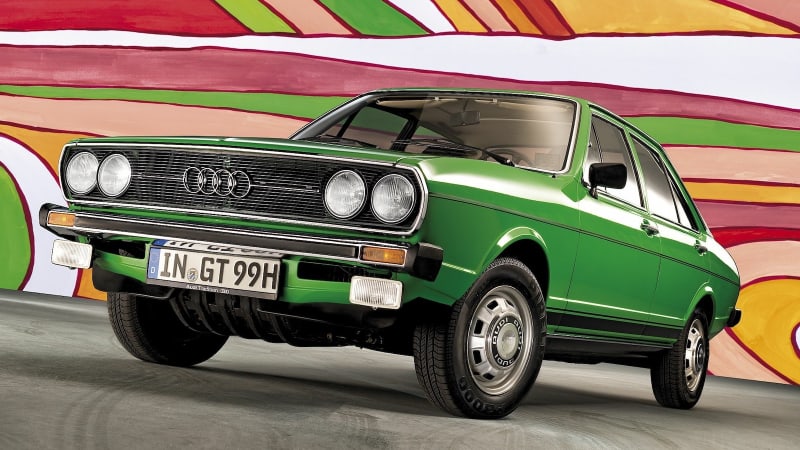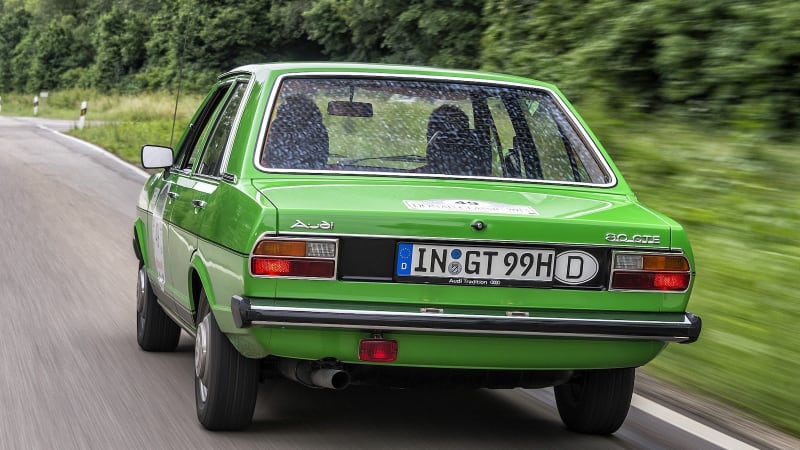This is how Audi established its brand in the United States

Before — long before — the brainstormers at Subaru decided to drop the concept of love into their marketing portfolio, the Audi Super 90 was already there.
“The Audi Super 90 is all about love,” wrote Howi in a comment on Bring a Trailer. “Wherever I took it, the Super 90 turned heads. People would stop me on the street and ask, ‘What kind of car is that?’ invariably followed by, ‘It’s beautiful.’”
Beauty, in the automotive cosmos, is, of course, in the eye of the beholder, and the Super 90’s virtues — its compact, upright stance, its funky dash behind the thinnest two-spoke steering wheel, and its front-wheel-drive platform — were fairly unique 60 years ago, and defined the car’s understated German character.
But you can’t really assess the Super 90 without bringing the Audi Fox — known as the 80 in some markets — into the conversation.
Five years ago the Curbside Classic website wrote this about the Fox: “This Audi was more like a smart, sensible girl with glasses, called Four Eyes by the cool kids, who would eventually bear many children. Audi made no attempt to add sex appeal to the 80/Fox lineup of sedans and station wagons with a sporty coupe or convertible comparable to the Mercedes SL or Volvo P1800, as it would with the Coupe GT of the next generation 80. A quarter century would pass before Audi would show the world its TT.”

Why are these Audis future classics?
In the Sixties, Audi was anxious to establish a brand presence in the U.S., and the Super 90 emerged late in the decade. There was another force at work here as well: in 1964, Volkswagen acquired a 50-percent holding of the Audi brand, which included a new factory in Bavaria in Ingolstadt, and the rights to a new, four-stroke engine design developed initially by Mercedes-Benz. The motor in the Super 90 (Audi felt that “super” equated with “luxury,” not speed) was a serious performer for its day, a 1.8-liter overhead value job mounted longitudinally that output 89 horsepower (the “90”designated the horsepower) at 5,200 rpm and 147 foot pounds of torque.
Because the car was front-wheel drive, it was left to engineers at partner Porsche to fiddle with a manual gearbox design that accommodated the powertrain specs. Most owners declared the four-speed box a delight.
The car went to market in 1967. It’s a cliché these days to describe such an object as an overachiever, but it was that. It set the stage for the larger, more “adult” sedan, the Audi 100LS, launched in 1968. VW initially balked at the idea of the 100, but it evolved into an unqualified success.
However, the real successor of the Super 90 was the first-generation of the 80 in 1973, called the Fox in North America.


After the Beetle, the Fox was unarguably among the most significant cars in VW’s modern-day history. It set the template for the new front-wheel-drive, water-cooled range that debuted in the mid-1970s. It evolved into a saloon, a coupe, a GTI variant, and a wagon, or, in Audi-speak, an “Avant.” Trivia fans may also recall that the Fox became the basis for Volkswagen’s Passat. The Passat, introduced in Europe first and in the U.S. as the Dasher in 1974, was essentially an 80 with a modified fastback body style.
The Fox body was light — less that 1,900 pounds — and was as frisky as its GTi successor would turn out to be. It was warmly welcomed in the States by the automotive press and enthusiasts alike.
What is the ideal example?
That’s a tough one, because simply finding a clean example will likely be a chore. A recent, well-kept 1974 sedan example sold for $12,000 late last year on BaT, powered by a 1.5-liter inline four. In the U.S., the Fox and Super 90 both are quite rare, so your choices are likely to be rather limited. In other words, it’s probably best to simply look for the nicest one you can find if you’re in the market.
Are there any good alternatives to this pair of Audis?
All things considered, the decade of the Seventies offered a rich selection of tasty, sporty coupes and sedans, some of which offered sleek designs — some were borderline sexy — and robust powertrains.
We mentioned the BMW 3 Series in a recent post as an alternative to the VW Corrado, but the 3, introduced in the States in 1977, remains a classic that still continues a revolution.
The Honda Prelude was short-lived in the U.S. but its life was extended through several generations in other markets from 1978 until the introduction of the Integra in 2001. We’re quite fond of the original, which spawned a brilliant magazine ad, showing a red Prelude on a twisty bit and the tagline, “Throw It A Curve.”
One more classic in the wings might be the 1976 Dodge Aspen, Motor Trend’s Car of the Year.







